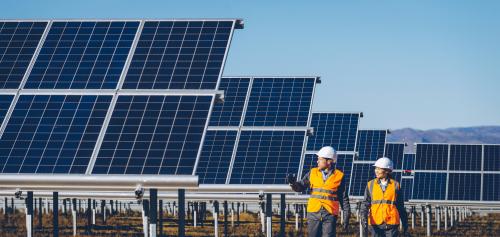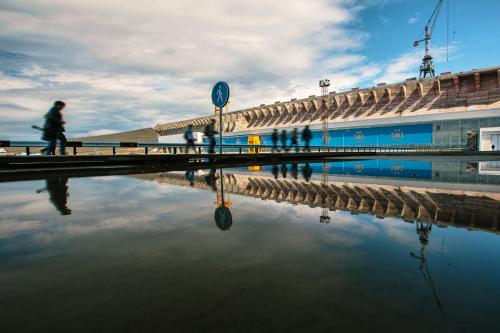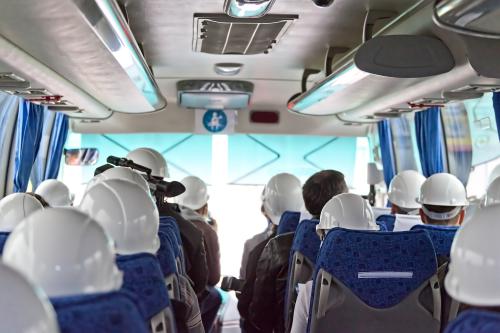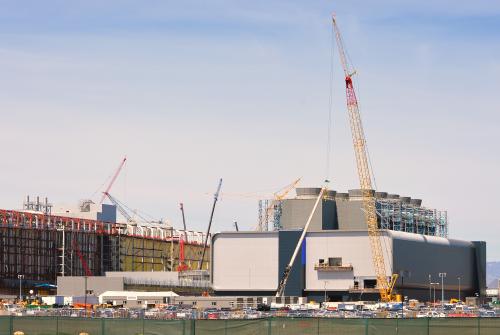President Joe Biden capped his first week in office at the end of January with a sweeping set of executive actions on climate change, tackling issues such as conservation, environmental justice, and evidence-based policymaking. But despite the wide scope, media scrutiny focused mainly on the number of jobs a climate push might generate, including a burst of fact-checking on whether Biden’s plan to use government purchasing power to buy zero-emissions vehicles would or wouldn’t lead to “one million new jobs in the American automobile industry.”
But a simple counting of job numbers overlooks several significant points in the economics of climate change mitigation and adaptation. Namely, it fails to account for the nature of the coming work, the occupations necessary to do it, and who will fill those roles—all topics we looked at in a 2019 Brookings report.
What did we find in that report? Overall, that the coming clean energy transition represents a major opportunity for accessible, inclusive employment—if more is done to bolster the clean energy workforce pipeline and ensure it becomes much more accessible to underrepresented populations.
In the report, we used federal datasets and industrial classifications from prior clean energy economy research to conclude that the transition to a clean economy will primarily involve some 320 unique occupations spread across three major industrial sectors: clean energy production, energy efficiency, and environmental management. These occupations represent a range of roles, including power plant operators and wind turbine technicians in the first sector; electricians and civil engineers in the second; and environmental experts and regulators in the third. (Read more about clean energy sector occupations on page 14 of the report.)

With this profile of the current clean energy workforce, we are able to make a few observations that point to the special value of clean energy jobs—and the potential opportunity if they become more numerous. Here is some of what we have learned:
- Workers in clean energy earn higher and more equitable wages when compared to all workers nationally. Mean hourly wages in clean energy exceed national averages by 8% to 19%. Clean energy economy wages are also more equitable: Workers at the lower end of the income spectrum can earn $5 to $10 more per hour than in other sectors. (Read more about clean energy sector wages on page 16 of the report.)

- Clean energy jobs are often more accessible than others, since even when they have higher pay, they tend to have lower educational requirements. This is especially true within the clean energy production and energy efficiency sectors, which include sizable occupations such as electricians, carpenters, and plumbers. Roughly 50% of clean energy workers have no more than a high school degree, yet earn higher wages than similarly educated peers in others industries. (Read more about clean energy sector education levels on page 18 of the report.)
- Education and knowledge requirements in clean energy vary across its sectors, with much of the industry requiring greater scientific knowledge and technical skills than the average American job. Along these lines, occupations within the clean energy production and energy efficiency sectors tend to require more STEM-related knowledge and skills than occupations elsewhere in the economy. Yet conversely, knowledge and skill requirements in environmental management occupations trend toward national averages. (Read more about clean energy sector knowledge and skill levels on page 22 of the report.)
- The clean energy workforce is, on the whole, older, dominated by male workers, and lacks racial diversity compared to all occupations nationally. Fewer than 20% of workers in the clean energy production and energy efficiency sectors are women, while Black workers fill less than 10% of these sectors’ current jobs. (Read more about the demographics of clean energy sectors on page 25 of the report.)

Given these findings, it’s clear that it’s not just how many new jobs may be created by climate mitigation and other complementary climate adaptation efforts that is exciting, but also the potential for these careers to address the nation’s unacceptable opportunity divides. In their variety, pay, and relative accessibility, clean energy jobs can advance equity and economic inclusion. As the nation rebuilds from the COVID-19 pandemic and recession, green jobs really can contribute to an equitable economic recovery and longer-term transformation of the economy.
But the sector can’t do that without explicit, intentional policy action to bolster the clean economy workforce pipeline and advance equity and inclusion. The current roster of clean energy workers is far from inclusive, suggesting the existence of distinct educational and training barriers that will require more targeted plans, programs, and funding. If the federal government plans to advance landmark climate policy, there is a clear need to link climate action to workforce action to ensure the clean energy economy is both skillful and inclusive. (Read more about broadening clean energy workforce pipeline on page 29 of the report.)
Enormous growth and replacement needs in clean energy careers offer the opportunity to rethink our current workforce development strategies. With occupations such as wind turbine service technicians and solar photovoltaic installers slated to grow by up to 60% in the next decade—alongside a continued need to fill skilled trades positions hit by a wave of retirements—there is a crucial need to take action now. Along those lines:
- We need to accompany federal executive orders and climate programs with funding to support locally delivered workforce development programs, apprenticeships, certifications, technical support, and recruitment programs.
- Future climate and infrastructure legislation should include specific measures to advance equity and inclusion for women and people of color. We have already seen elements of this in calls for a new “Civilian Climate Corps,” which would help train and pay a new generation of talent.
- Federal leaders will need to work with state, local, and private sector partners to develop: sector strategies for recruiting diverse workers; supports for minority- and women-owned business creation; anti-discrimination trainings; targeted workforce development programing; retention strategies; and initiatives to address recruiting and hiring bias. The upside in doing so is unequivocal, as we have seen in our broader transportation, water, and other infrastructure workforce needs.
As the country reboots its climate concerns (and with them, the “green jobs” debate), no one should forget that the clean energy sector will likely produce not just a good number of jobs, but accessible jobs that—with a little intention—can address the nation’s inclusion crisis as well as its climate one.









Commentary
Inclusion must be front and center in President Biden’s focus on clean energy jobs
February 9, 2021